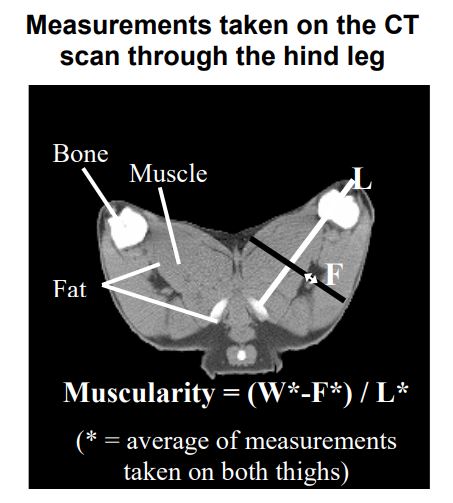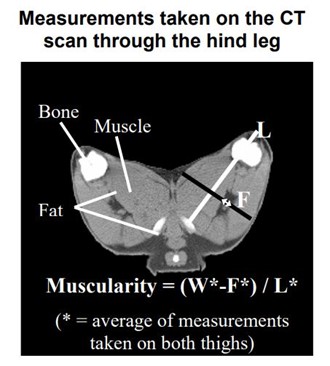Breeding for gigot shape

 Breeders that are using Computed Tomography (CT) now have EBVs that will help them identify sheep that have better muscularity of the hind leg, or gigot.
Breeders that are using Computed Tomography (CT) now have EBVs that will help them identify sheep that have better muscularity of the hind leg, or gigot.
The production of a Gigot Muscularity EBV has been possible following the development at SAC of a muscularity measure that can be assessed from the CT scan taken through the hind leg of a lamb. It has been found that this
measure is positively correlated with both the live weight and muscle depth measurements collected on-farm.
The actual measures that are assessed on the CT scans are standardised so that they represent the thickness of muscle (mm) at a fixed bone (femur) length of 100 mm. The typical range for these values is 40 – 80 mm.
Muscularity EBVs typically range from -5.0 to 5.0 mm. These EBVs indicate how much better or worse an animal is relative to another. For example, a sheep with a value of 5.0 will have 5 mm greater muscle thickness at a fixed bone length of 100 mm in the hind leg, than the average sheep born in 2010.
Gigot EBVs are expressed relative to liveweight
Since 2010, Gigot Muscularity EBVs have been weight adjusted - showing the superiority of muscling at a fixed weight, rather than at a fixed age.
Summary
Index-based selection has not been detrimental to the selection of sheep with good gigots, but the availability of an EBV for this trait will enable further improvements to be made.


